How Mercedes could have won the Mexican GP: F1 data analysis
Mercedes was hopeful of winning the 2022 Mexican Grand Prix, and race data shows that it had the pace... just not the right strategy
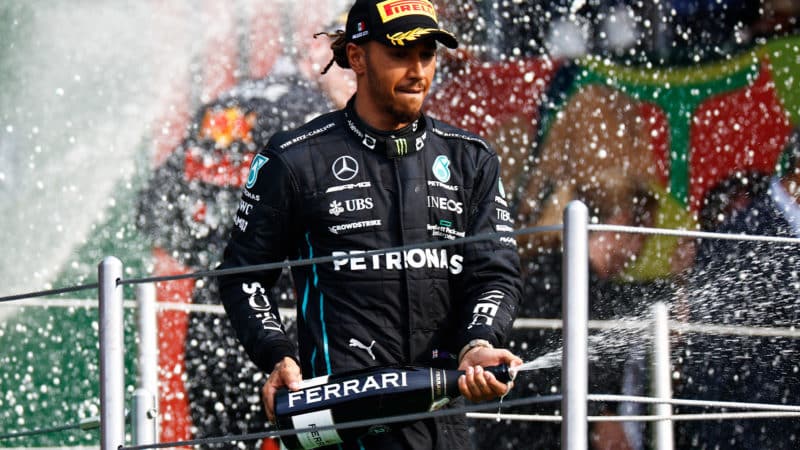
Hamilton on the podium in Mexico, 2022

It was a race that Mercedes thought it could win. And it was probably right.
Mark Hughes has already explained why Mercedes played it too safe and, looking at the data behind the Mexican Grand Prix, it’s clear that it lost its best chance for victory in 2022 so far.
In the thin air of Mexico City, its car had the race pace and starting position to pose a challenge, and the lap times suggest that Red Bull would have had a fight on its hands if both teams were racing to the finish line on medium tyres.
But a conservative approach to tyre strategy, in using the medium then hard compound, failed to pay off for Mercedes as Max Verstappen won with the soft and medium tyres.
It might have been down to unlucky guesswork, underestimating tyre life, or a choice to prioritise track position over a longer first stint, but the result left the team deflated, having been in contention for a win.
Here is the data that shines a light on what Mercedes should have done and why.
When the tyre blankets came off
Chart 1 Tyre strategy summary
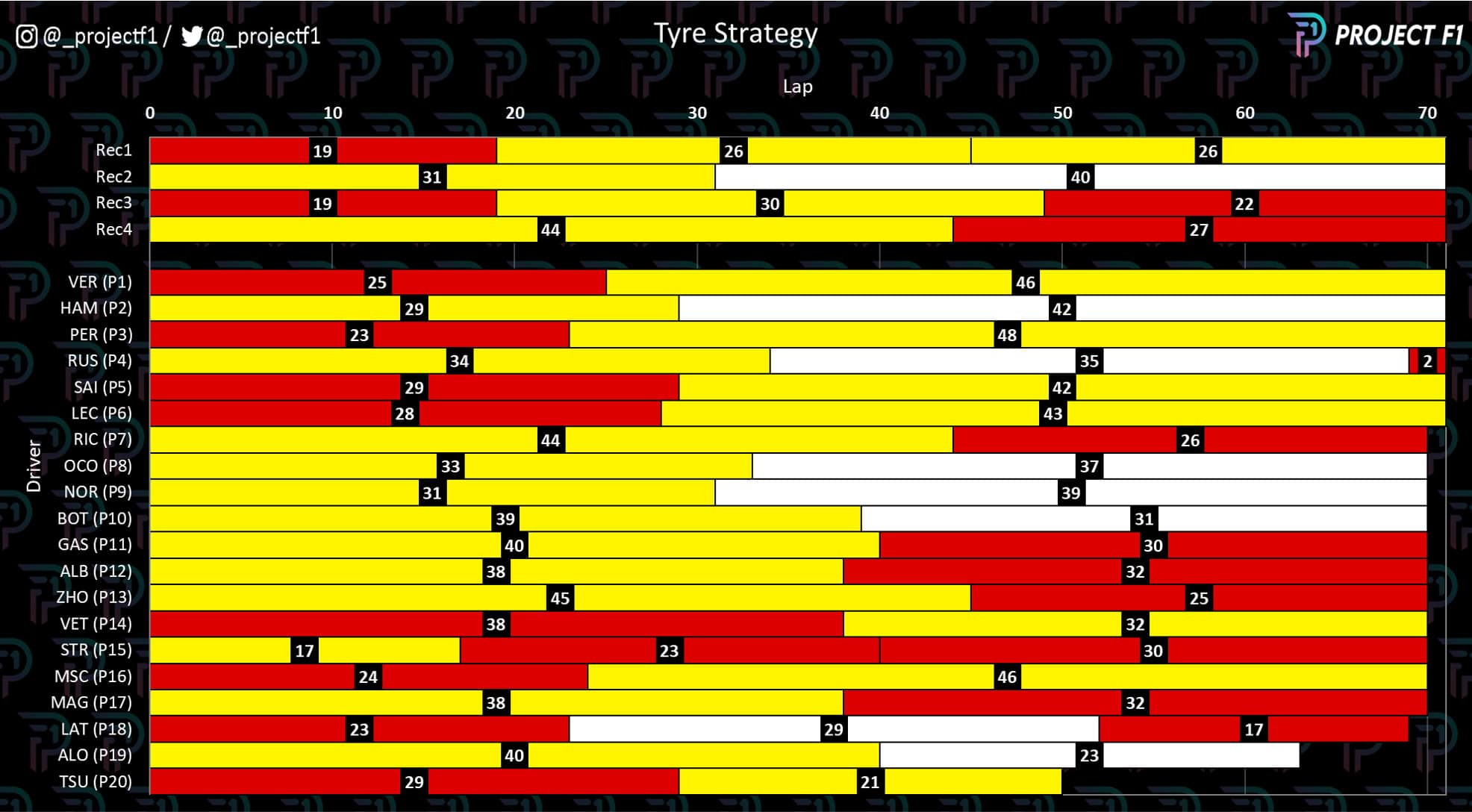
As Ferrari has shown time and time again this year, race-winning pace is nothing without the right strategy.
Immediately clear in the chart above, which shows each driver’s tyre use throughout the race, is Mercedes’ decision to start on the yellow-walled medium tyre, where Ferrari and Red Bull opted for the red-striped soft.
The four lines at the top show Pirelli’s recommended strategies, which assume that starting on the soft tyre, in a car laden with fuel, would result in degradation that’s too high to support a two-stop.
So, by choosing mediums, Mercedes looked to be more flexible than rivals, preserving the ability to run a one-stop race, with either hard or soft tyres in the second stint, or to stop twice.
For Red Bull and Ferrari, a one-stop strategy while starting on the soft would prove more of a challenge.
However, Mercedes’ strategy left Hamilton and Russell weakened against the soft-tyred Verstappen at the beginning of the race. In 2021, Verstappen vaulted into the lead from his third-place grid slot by slipstreaming the cars ahead. But the reduced grip of the hard tyre would make it difficult for Hamilton to repeat the move a year later from the same place on the grid.
The Mexican GP story
Chart 2 Cumulative delta plot
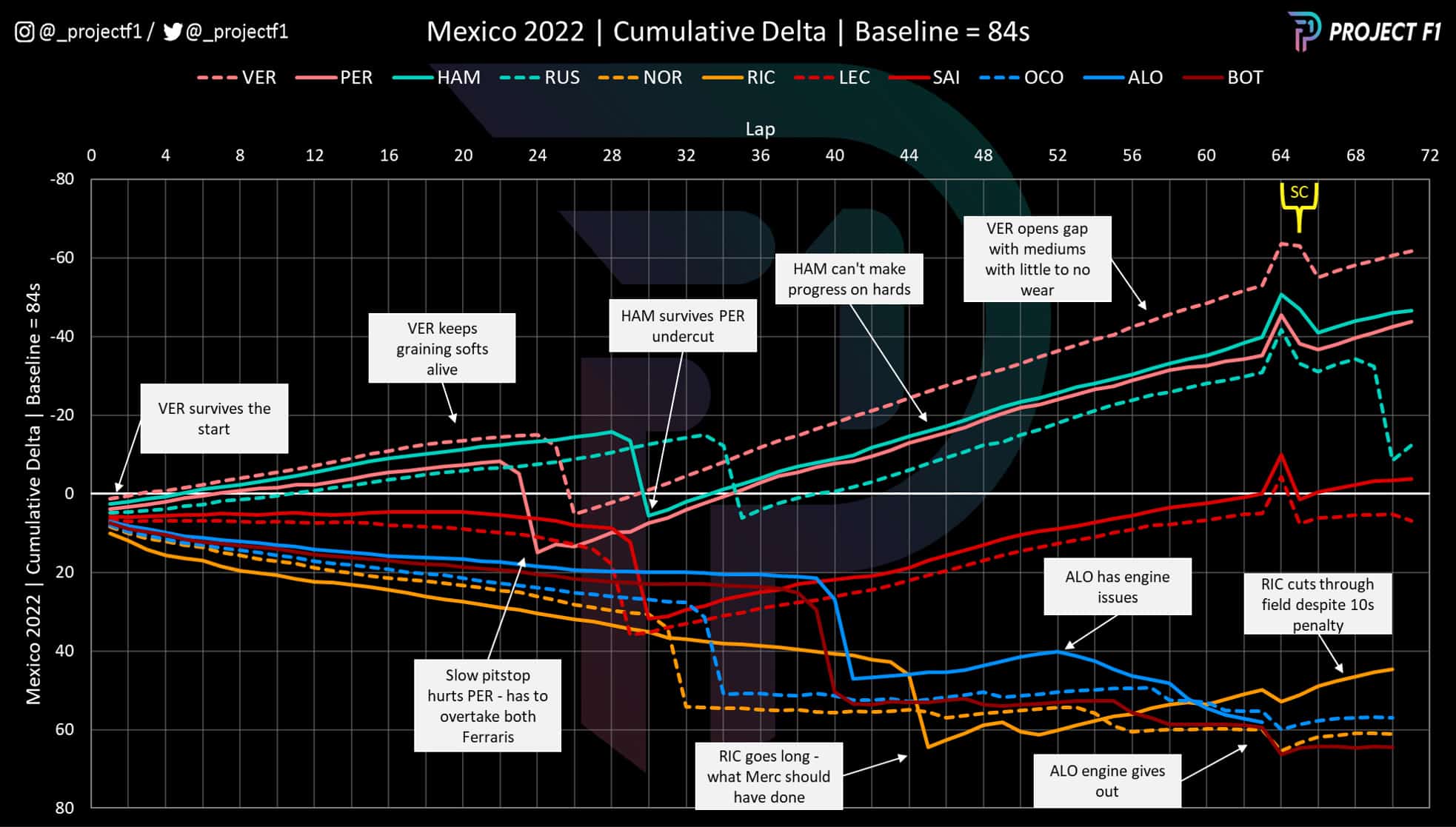
Could a Mercedes driver on soft tyres have led from the start? We’ll never know, as it was a soft-shod Verstappen who converted pole into the lead and maintained his position down the long start/finish straight.
He covered the inside line into Turn 1 and, once through the opening chicane, was safe from the powerful slipstream threat.
Mercedes would surely have been hoping to have at least one car ahead of Verstappen, and its strategists may have already been sensing that they had got it wrong.
But race pace was strong, helped by Verstappen needing to conserve his tyres, to keep his one-stop option open.
The cumulative delta chart above shows each driver’s average lap time, updated each lap as the race goes on, and set against a 1min 24sec benchmark. It shows how the front four built a considerable gap to the Ferraris as the first stint went on.
Verstappen and Hamilton continued to stretch their legs and their edge over Perez and Russell behind. Soon enough, Perez opted to pit – the first headwind for Red Bull and lifeline for Mercedes.
Perez in the pits
Chart 3 Pitstop gain/loss
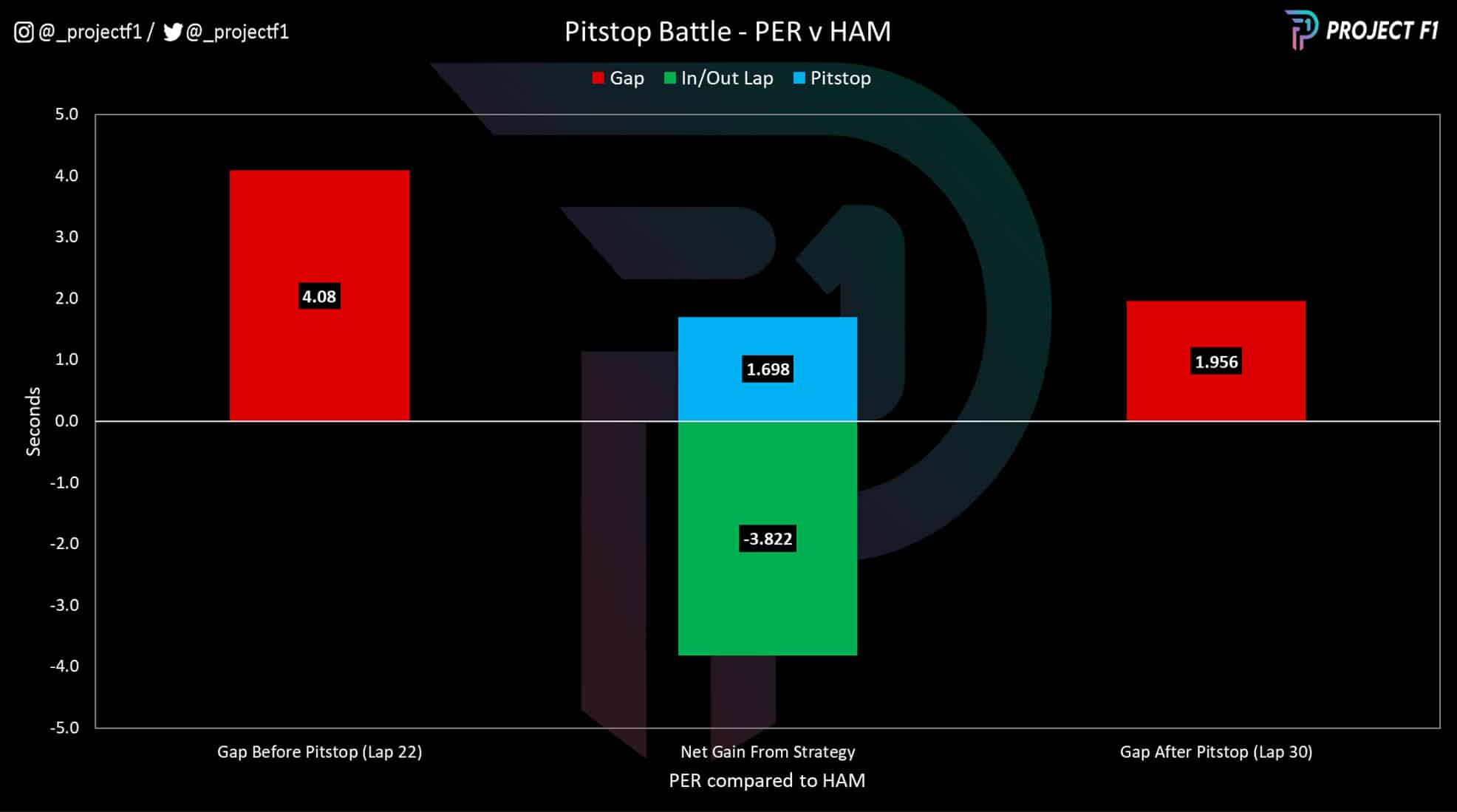
Perez’s pitstop on lap 23 was slow, costing him around 1.7sec relative to Hamilton, which put him back on track more than 5sec behind Charles Leclerc, and dented his hopes of undercutting Hamilton.
Catching and passing the Ferraris (Perez went past Sainz when the Ferrari pitted) lost Perez time relative to Hamilton. This enabled Mercedes to go longer in the first stint before pitting Hamilton on lap 30 and still emerging 2sec ahead of the Red Bull.
It was not ideal for Red Bull, but neither was it going Mercedes’ way. Hamilton’s stop was much earlier than recommended in Pirelli’s medium-soft strategy, shown in row four of Chart 1.
It left Hamilton pursuing a one-stop strategy on the hard tyre – barring the choice of a mixed up two-stop.
Medium tyres show their staying power
Chart 4 Race pace compared
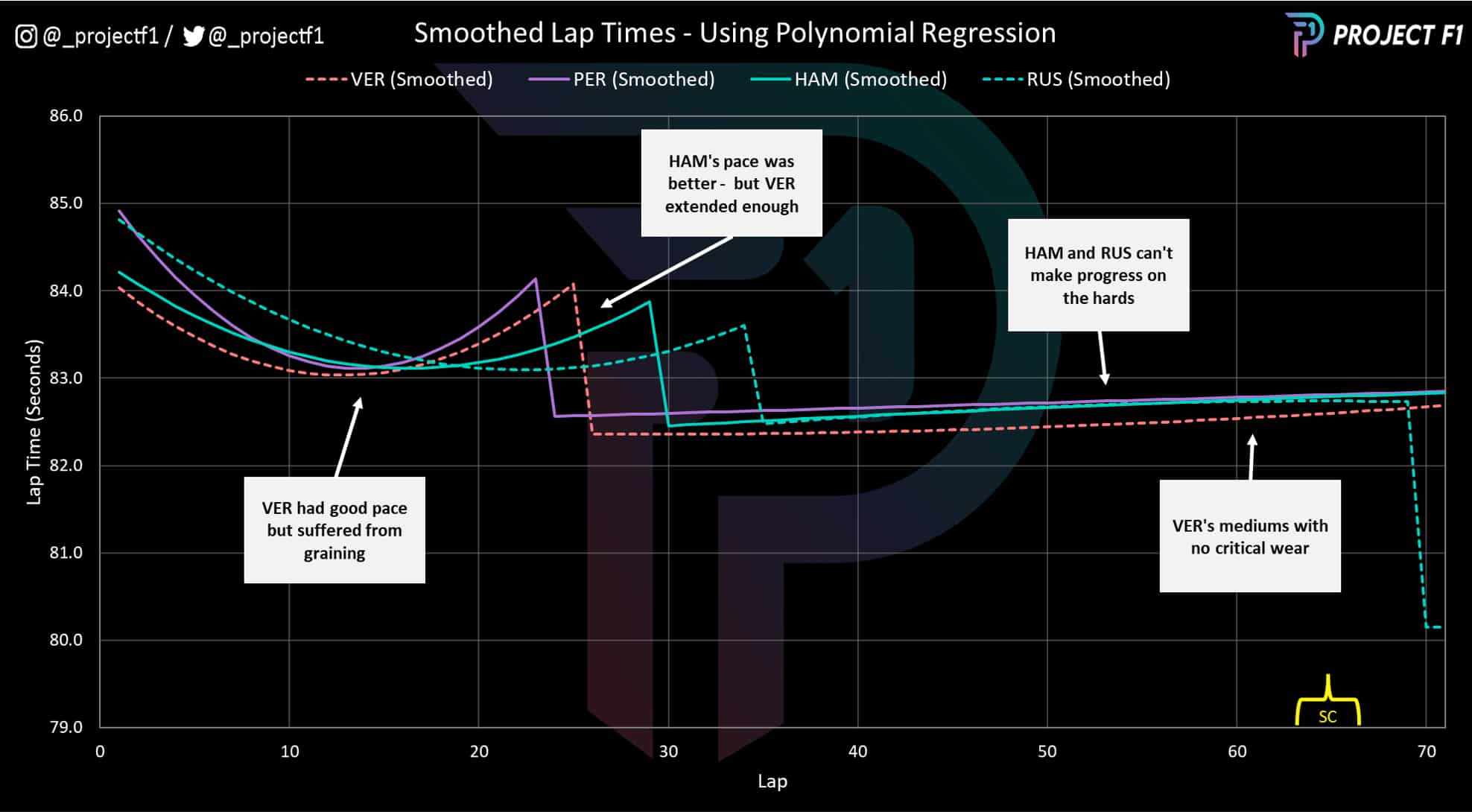
It was a peculiar move for Mercedes. Yes, Hamilton had maintained track position over Perez, but fighting Red Bull’s soft-medium strategy with a medium-hard strategy would only have worked if Mercedes had a distinct advantage on harder tyres.
Red Bull was likely to have better pace throughout of the race thanks the extra grip afforded by the softer rubber. That is, unless the tyre wear was so punishing that the harder compound tyres could prevail and Red Bull would be forced into a two-stop.
But as Chart 4 above demonstrates, using smoothed lap times that eliminate anomalies, the tyre wear of the compounds was lower than expected. Red Bull did suffer graining with the soft tyres – as shown by the steeper drop-off in lap time during the first stint. But this only gave Hamilton an advantage for four laps, before Verstappen pitted for mediums.
This brief period of pace superiority was nowhere near enough to overcome the deficit of the hard tyres’ performance compared to the medium. Looking further along Chart 4, Verstappen has little wear and better pace compared to both Mercedes drivers in the second stint.
Russell did radio in, asking for soft tyres, but he pitted on lap 34, much earlier than Pirelli recommended for a medium-soft strategy.
With Perez remaining in close pursuit of Hamilton for majority of the second phase of the race – there was little that Mercedes could do to rectify the strategy other than to hold conviction that the tyre drop-off would arrive eventually. But such an event would never arrive leaving the race to finish in the same order following the pitstops.
This begs the question: what could Mercedes have done differently?
Soft tyre was superior at the start
Chart 5 Tyre degradation compared
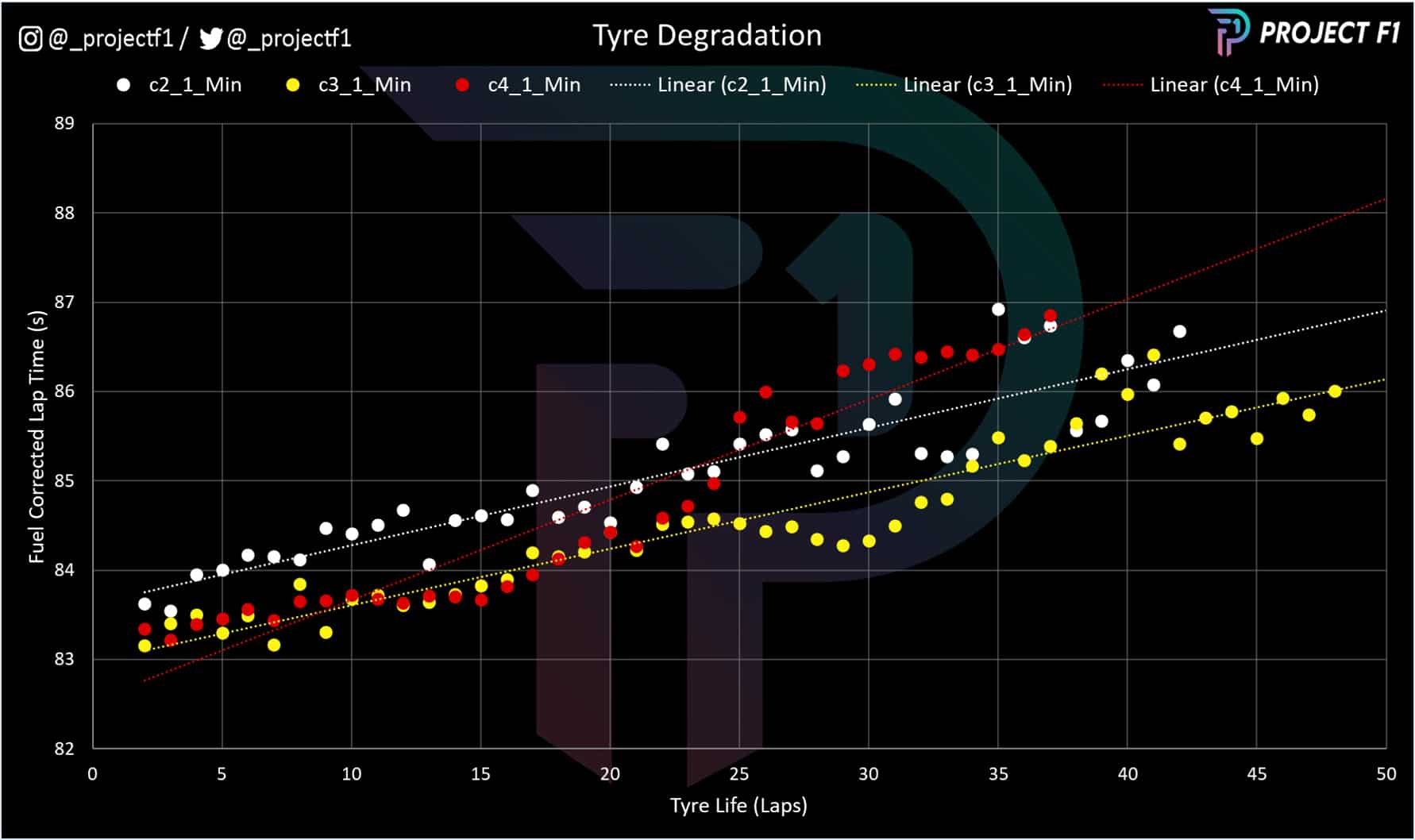
While the choice of the hard tyre locked Mercedes drivers into their positions, the team really got it wrong with its choice of starting tyre.
With all the benefits of retrospect, the medium tyre was a conservative option, in contrast to the bombastic approach to winning the race that team boss Toto Wolff appeared to be advocating before the start.
Chart 5 illustrates the problem by displaying the average lap time for each compound throughout a stint. Times are recalculated for to remove the effect of a reducing fuel load, leaving tyre wear as the primary factor behind performance.
Until the 25 lap mark, the pace of the soft tyre was close to that of the medium. Drivers were likely managing their pace at a similar level, but those with soft tyres would initially have more grip when they needed it.
The steep red trendline, which shows lap times dropping off faster, is skewed by the rapid deterioration in performance once the soft tyre goes beyond 25 laps.
This is, in essence, where Mercedes got it wrong, as the soft tyre’s pace and degradation was not as troublesome as predicted, especially at the hands of Verstappen.
That left the medium tyre available to Red Bull when it stopped. With the requirement to use two different compounds in the race, Mercedes was left with a choice of hard or soft…
How Mercedes had better pace than Red Bull
Chart 6 Medium compound pace and degradation compared
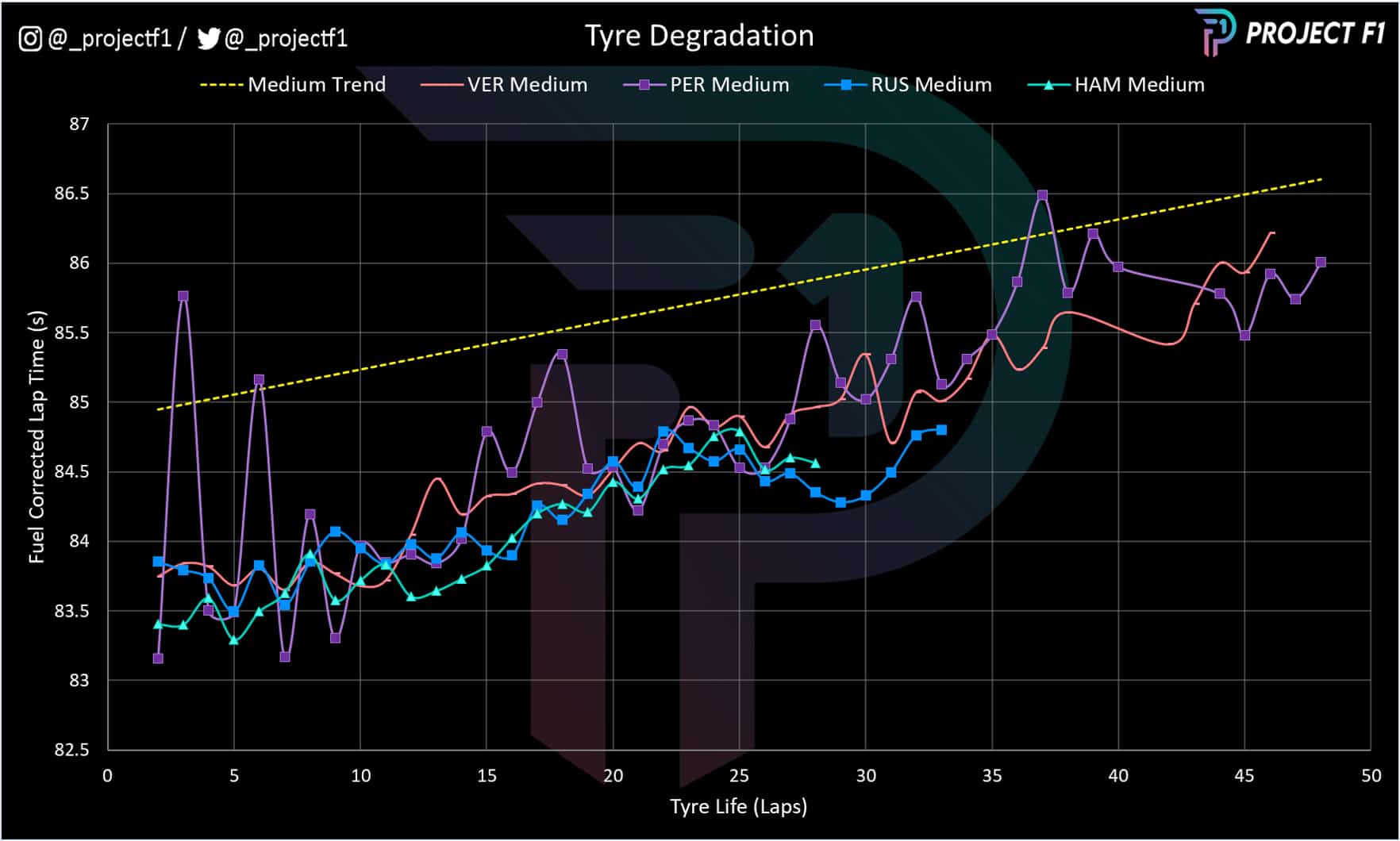
Mercedes’ potential can be seen in Chart 6, where the fuel-corrected times are shown for Mercedes’ first stints and Red Bull’s second, offering a medium tyre pace comparison.
Mercedes’ pace is better overall, albeit with shorter stints that would have allowed the drivers to push harder.
That being said, Mercedes’ lap time deterioration tracks a similar trend to that of Red Bull.
Assuming this would have continued, and Mercedes could have maintained the trend while the Red Bulls lapped at the same pace, then Silver Arrows appear to have had the pace to challenge for the win with a soft-medium strategy.
One only needs to look at Daniel Ricciardo’s race who, by using those tyres the other way round in a medium-soft play, ended up best of the rest in the midfield. You can track his progress in Chart 2.
Had Mercedes been more aggressive in risking softer compounds to match, or even exceed, Red Bull’s pace then it may well have had a driver standing on the top of the podium. Instead of relying on an alternate strategy, it needed to fight fire with fire, soft compound with soft compound.
Project F1 turns data into graphics that uncover race pace and strategy
See more analysis at @_ProjectF1 on Twitter or @_ProjectF1 on Instagram
